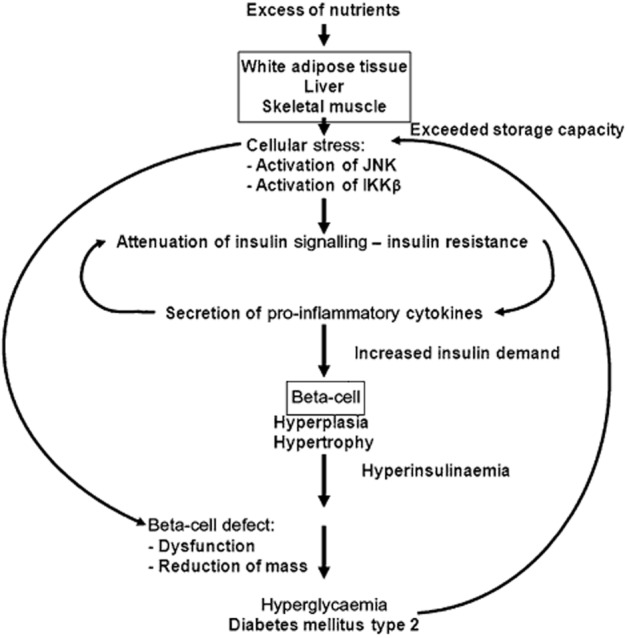Figure 1.

Pathogenesis of type 2 diabetes mellitus. Excess of nutrients is stored in the WAT, liver and skeletal muscle. When their storage capacity is exceeded, cellular stress leads to the activation of JNK and IKKβ, which, in turn, attenuates insulin signalling. Peripheral insulin resistance leads to secretion of pro-inflammatory cytokines mainly from macrophages migrated into the WAT. Pro-inflammatory cytokine signalling further aggravates insulin resistance. To compensate for the increased insulin demand, beta-cells hypertrophy and become hyperplastic, leading to hyperinsulinaemia. In addition, beta-cells themselves are exposed to cellular stress promoting beta-cell dysfunction and loss of beta-cells, and finally resulting in hyperglycaemia. The elevated blood glucose levels reinforce cellular stress.
